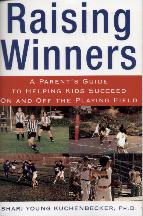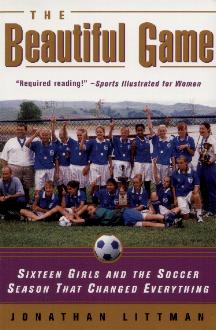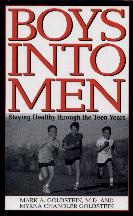Teens
|
||||||||||||||||||||||||||||||||
|
|
 |
 |
 |
 |
 |
|
COLUMNS |
||||
|
|
|
 |
|
 |
 |
 |
|
 |
 |
Newsbytes - latest news for parents of adolescence
What Adolescents Need from Their
Fathers - Part 1
What Adolescents Need from Their
Fathers - Part 2
What Adolescents Need from Their
Fathers - Part 3
The
Battle Ground: How to Stop Arguing with Your Teen Once and
For All
Guns don't kill people — our
sons do
Use a Gun, No More Fun
Go Directly To Jail, Do Not
Pass Go, Do Not Collect $200
The Warning
Signs and Major Risk Factors of Teenage
Suicide
The
Ultimate Do’s and Don’ts Guide for Talking to Your
Kids about Drug and Alcohol Abuse
![]()
Body Image and Young
Girls
Teen
Violence
AIDS and
Youth
A Puppy Called
Puberty
Age
of Discontent
Bend It Like
Beckham
Manga Books for Young
Women
What is Beauty in the
Media
11 Facts About Teens and
Self Esteem
Poison
Missing
Children
Emergency
Numbers
Related Issues: Talking
With Kids About Tough Issues, California Teens,
Adolescence, teen
health, teen sex, testicles,
kidstuff,
children, fathers
& sons, fathers
& daughters and fathers
stories
Other related issues: circumcision,
fraternities, gangs,
guns, hazing,
sexuality-general,
smoking, body
piercing, tattoos, suicide,
tv violence.
Resources on gangs,
families,
parents,
father's
rights, urgent,
youth.
Also the Facts
of Life Line
Websites
for Girls ![]()
Books on: adolescents,
13th
generation, children,
circumcision,
communication,
divorce-general,
families,
fathers-general,
fathers
& stepfathers, fathers
& daughers, fathers-single,
fathers &
sons, marriage,
parenting-general,
parenting-single,
relationship,
ritual-initiation,
sexism,
sex roles,
sexuality-general,
gangs,
abuse-boys,
abuse-child,
sexual-incest,
abuse-ritual,
abuse-sexual,
violence-rape,
violence-sexual
Slide
Guides: Gangs, Testices, STDS, AIDS, Safe
Dating.
Journals
- on Child, Emotional, Religious, and Sexual Abuse and
Trauma
Periodicals
What Adolescents Need from Their
Fathers - Part 1
Dear Mr. Dad. I’ve got 12-year old boy-girl twins. I’ve already noticed that my relationship with them has changed, but I want to make sure I’m doing everything I can to stay involved as they enter the teen years. What do they need most from me and how can I gently steer them in the right direction?
A: Great question! There are all sorts of things that have an influence on your teen’s behavior: you, his friends, the media, his teachers, and himself. Unfortunately, you have control over only one: yourself. Fortunately, though, how you treat and raise your children will have an influence over how much credence they give to the other things in their life. Even though your teens will never admit it, they need you now more than ever. Boys are looking at you to show them what it means to be a man, what men do in our society, and how they treat women. Girls are looking at you to model the way they should expect to be treated by the men in their lives. Here’s what you need to do to be the most involved father you can be, as well as to reduce the chances that your teens will engage in risky or dangerous behavior:
Be There. As much as you can, as often as you can. Teens want to know that their dads care about them, and your physical presence is incredibly important. Having regular family dinners is a major sign of involvement. Be there when they come home from school if you can. Kids (including teens) who are left alone after school are more likely to drink or do drugs than kids who have adult supervision. Be there in spirit too. Turn off the TV during dinner, check your email and read the paper later.
Hugs. Your teens still want reassurance that you love them—even if they’re too embarrassed to ask for it. Don’t be shy about hugging your son; just respect his feelings and don’t do it in front of his friends. And don’t be afraid to hug your daughter. When their daughters start going through puberty, some dads back away from almost any physical contact, fearing that someone will think they’re behaving inappropriately. But those daughters—many of whom are confused and worried about their changing bodies and the way they look—interpret the lack of hugs from the most important man in their life as a sign that you don’t like the way they look, and that everyone else will feel the same way too.
Expectations. Having high-yet-reasonable expectations for grades, music practice, extracurricular activities, homework, etc., this lets kids know that you care and that you want them to succeed.
Monitor. Do you know how much time they’re spending watching TV? On social media? Do you know what kind of music they’re listening to? How they’re doing in school? The names of their friends? I’m not suggesting that you sneak around and shove your nose into everything, just pay attention. Dads who stay actively involved in their teens’ lives have children who are less likely to drop out of school, abuse drugs or alcohol, or become teen parents.
Reduce Temptation. Model the behavior you expect from them—your drinking, smoking, or doing drugs increases the chance that your children will. Seventy percent of teens say their parents have a lot of influence, compared to only 26% who say their boyfriend or girlfriend does.
This may sound like a lot, but it’s just the
beginning. Because teens need so many things from their
fathers, I’ll be continuing this column next week.
Source: mrdad.com/ask-mr-dad/what-adolescents-need-from-their-fathers-part-1/
![]()
What Adolescents Need from Their
Fathers - Part 2
In Part 1, we introduced the topic of what adolescents
need from their fathers (and, as many readers pointed out,
mothers as well). That was just the beginning of the list.
Here are a few more things to keep in mind as you parent
your teen.
Encourage exercise and good nutrition. Your teen may be too big to wrestle with, but that doesn’t mean that she shouldn’t be active. Teens—boys and girls—need to exercise for at least 30 minutes every day to build strength, flexibility, and bone mass. Unfortunately, during the teen years, exercise time declines while screen time increases—and so does the risk of obesity, which is about 50% higher than it was just two decades ago. Make regular physical activity mandatory, and set a good example by being physically active yourself. If she’s interested, invite her to join your softball team, swim or run with you, play racquetball together, or even tag along to your karate class.
Read. Reading is an essential skill and you should do everything you can to promote it. Encourage him to spend time reading every day and make sure he sees you with a book in your hand. Tell each other about what you’re reading, even if it’s just a story from the newspaper. Encourage him to read on his own. Books can help him learn about cultures, find new role models as he moves away from us, and start formulating his philosophy on life.
Encourage creative thinking. When dealing with any kind of problem, focus on these four steps: identify the problem, brainstorm possible solutions—even ones that sound silly, identify the best and the worst options, and implement the best one.
Support their friendships (unless they’re hanging out with a truly bad crowd), and interest in popular culture. Kids this age are consumed with the notion of belonging and being accepted by their peers, and often, seeing the right movies, going to the right concerts, wearing the right clothes, and even an occasional ear piercing are what it takes to do that. Get to know her friends. We hear so much about the evils of peer pressure, but peers can be good too. Keep up to date on what’s cool, but don’t get too involved: The last thing she wants is a dad who acts like a teenager.
Respect their feelings. A few years ago, your teen though you were the coolest thing going. But now you’re more of an embarrassment. If your son (or daughter) has four or five friends over for a slumber party, don’t even think about trying to hang out with them. If you’re driving the carpool and he wants you to pick up or drop off around the corner, do it (as long as it’s safe). You may also need to to cut back on kissing him in public.
Find common interests. Take an interest in her activities—whether it’s hiking, biking, video games, art, movies, music, sports, camping, going to museums, or something else—but don’t fake. Try to arrange one evening every week to spend time alone with each of your kids, especially the teens.
Know when to listen and when to talk. You’re
a mentor now so keep your unsolicited advice to a minimum.
Your teen may get furious at you for a perfectly
well-intentioned offer of help—not because she
doesn’t need the help, but because she doesn’t
want it rubbed in her face that she can’t do without
it. Exceptions to the advice rule are for certain tough
topics like drugs, sex, and other non-negotiable health and
safety issues. Let them know they can always talk to you and
that you’ll listen in a non-judgmental way.
Source: mrdad.com/ask-mr-dad/what-adolescents-need-from-their-fathers-part-2/?utm_source=newsletter&utm_medium=email&utm_campaign=this_weeks_news_from_mr_dad&utm_term=2018-05-05
![]()
What Adolescents Need from Their
Fathers - Part 3
Over the past two weeks, we’ve been talking about some of the many things teens need from their dad (and/or mom). While this is the conclusion of our series, in reality, there’s no end to what our children need from us—or to how many times you might have to satisfy what looks like the same need. As you know (or soon will), a 13-year-old is a very different from a 17-year-old, and the approach that works perfectly with one might flop with the other.
- Set clear, reasonable expectations and limits. Some activities (drugs, alcohol, R-rated movies) may not be acceptable in your home at all. Others, such as doing her own laundry, time spent with friends, screen time, and curfew, may be negotiable. If you don’t set limits, your child will go to her friends for support. The problem with that is that in most cases, those friends don’t know any more than she does. But because teens share a certain herd mentality with sheep, she’s likely to go along with what “everyone else” seems to be doing. Get her involved in coming up with the rules and setting the consequences. You enforce them.
- Give responsibility and encourage independence. This can mean everything from letting your teen babysit for younger siblings or neighborhood kids to letting him drive your car or helping investigate and plan overseas trips. Let him make his own decisions (within reason) and don’t bail him out unless you really need to. Teens, like the rest of us, learn a lot from making mistakes.
- Build financial independence. Sit down with your teen and chart out how much you expect to spend on clothes, cell phone, etc. over the next year. Then, give her 1/12 of that amount every month and let her make her own purchases. This teaches about money, gives her a lot of control, and reduces the amount of fights you’ll have over who’s paying for what or the difference between a need and a want. If you’re feeling adventurous, give her several months’ worth at a time. The catch is that if she blows it all on a Gucci gym bag, she may end up wearing the same tattered jeans for the next six months. Now’s also the time to get her set up with a checking/ATM account and to encourage her to start socking away some of her allowance or lawn-mowing money for a car.
- Choose your battles. Some things just aren’t worth arguing about, so don’t be afraid to compromise. Who cares what your teen wears, as long as it doesn’t smell. And if he doesn’t want to do his homework, great. Just as long as he knows that he’s responsible for maintaining his grades.
- Don’t take things personally. Your feelings are going to get hurt during this time. You’ll be challenged, told that you’re hated and that you’re an idiot. Fortunately, you aren’t alone in this, and eventually your child will come around. As Mark Twain put it, “When I was 14, I couldn’t believe how ignorant my father was. By the time I turned 21, I was astounded at how much the old man had learned in just seven years.”
- Encourage community involvement. Volunteering at a recycling center or serving meals at a homeless shelter on Thanksgiving are important ways of reinforcing a sense that your teen is a citizen of a larger world. It’s crucial that you set a good example by doing some of the same activities. I still remember sitting down with my father and going through the dozens of solicitations he received from charitable groups and watching him write check after check to ones we both decided were most worthy.
- Keep in touch with your child’s teachers, coaches, counselors, and others. Chances are your child will hear that you’ve been snooping around but deep down, she’ll appreciate your concern.
Guns don't kill people — our
sons do
We need to find ways to stop the childhood injuries that lead boys to murder.
Our daughters do not kill. Why the difference? For boys, the road to successful manhood has crumbled. It's time we go beyond fighting over guns to raising our sons.
After Newtown, Connecticut, parents cried out, "What's making our children kill?" But it is not our children who are killing. It is our sons. All but one of the 62 mass killings in the past 30 years was committed by boys or men.
We respond by blaming guns, our inattentiveness to mental health, violence in the media or video games, or family values. Yes, all are players, but our daughters are able to find the same guns in the same homes, are about as likely to be mentally ill, have the same family values and are exposed to the same violence in the media. Our daughters, however, do not kill. Why the difference?
Start with suicide. Each mass murder is also a suicide. Boys and girls at age 9 are almost equally likely to commit suicide; by age 14, boys are twice as likely; by 19, four times; by 24, more than five times. The more a boy absorbs the male role and male hormones, the more he commits suicide.
No manly model.
For boys, the road to successful manhood has crumbled. In many boys' journey from a fatherless family to an almost all-female staff elementary school such as Sandy Hook, there is no constructive male role model..
Adam Lanza is reported to have gone downhill when divorce separated him from his dad. Children of divorce without enough father contact are prone to have poor social skills; to struggle with the five D's (depression, drugs, drinking, discipline and delinquency); be suicidal; be less able to concentrate; and to be aggressive but not assertive. Perhaps most important, these boys are less empathetic.
And just while their bodies are telling them that girls are the most important things in the world, these boys are locked into failure. Boys with a "failure to launch" are invisible to most girls. With poor social skills, the boys feel anger at their fear of being rejected and self-loathing at their inability to compete. They "end" this fear of rejection by typing "free adult material" into Google and working through the quarter-billion options. Online "success" increases the pain of real world failure.
Fragile fantasy success.
So, too, with these boys' relationships with video games. While girls average a healthy five hours a week on video games, boys average 13. The problem? The brain chemistry of video games stimulates feel-good dopamine that builds motivation to win in a fantasy while starving the parts of the brain focused on real-world motivation. He'll win at Madden football, but participate in no sport.
It's time we go beyond fighting over guns to raising our sons. With one executive order, President Obama can create a White House Council on Men and Boys to work with the Council on Women and Girls he formed in 2009. Why? No one part of government or the private sector has a handle on the solution.
A coordinated strategy is best developed at the White House level. The mere formation of such a council by the president alerts foundations, companies, families, teachers and therapists that our sons' "failure to launch" needs to be on their agenda. And politically, an effort to go beyond the rote ideological disagreements of the two parties could help build the unity to actually do something instead of fight to a standstill in a closely divided country.
There are few things a culture does as important as
raising children. We can't continue to fail half of
them.
Source: Warren Farrell is author of
Why
Men Are the Way they Are.
![]() He is co-authoring a book with John Gray, titled Boys to
Men.
He is co-authoring a book with John Gray, titled Boys to
Men.
In California, if you're 14 years or older and use a gun in conjunction with a crime, you'll get 10 to life. Life if you shoot someone with it. 20 years if you fire and miss. And 10 years just for using it without firing it.
Go Directly To Jail, Do Not
Pass Go, Do Not Collect $200
In Oregon, Measure 11 that went into effect April 1, 1995 says: If you are 15 or older and if you do any of 21 crimes in Oregon, you must go to prison for a long time! Murder is just one of the crimes. Some of the others are done everyday. Here are some everyday situations not longer falling under the "Boys Will Be Boys" category of innosence:.
- You alone or with a friend want someone's baseball cap. You either pretend to have a weapon or threaten to beat the owner up. Robbery II: You and your friend go to prison for 5+ years.
- You and a friend get into a fight with another person. Your friend pokes the other person in the eye with the handle of a hairbrush, a stick, etc. The eye is injured. Assault II: You and your friend go to prison for 5+ years.
- You and a date are at a movie. You touch your date's buttocks, crotch or breast. Your date tells you to stop. You ignore this and touch your date there again. Sexual Abuse I: You go to prison for 6+ years.
- You hear that someone is messing with your friend. You go to their house and force them outside to beat them up. Kidnapping II: You go to prison for 5+ years.
- You are driving under the influence of alcohol, drugs and/or inhalants. You cause an accident and someone dies. Manslaughter I: You go to prison for 10 years.
Here is a list of all the Measure 11 crimes and how long you will stay in prison if you are found guilty. No probation! No parole! No early release! Just prison. (Yrs/Mos):
- Robbery II (5/10)
- Robbery I (7/6)
- Sexual Abuse I (6/3)
- Unlawful Sexual Penetration II (6/3)
- Unlawful Sexual Penetration I (8/4)
- Sodomy II (6/3)
- Sodomy I (8/4)
- Rape II (6/3)
- Rape I (8/4)
- Kidnapping II (5/10)
- Kidnapping I (7/6)
- Assault II (5/10)
- Assault I (7/6)
- Manslaughter II (6/3)
- Manslaughter I (10)
- Conspiracy to Commit Murder (7/5)
- Attempted Murder (7/5)
- Murder (25)
- Conspiracy to Commit Aggravated Murder (10)
- Attempted Aggravated Murder (10)
- Aggravated Murder (30 to life)
Think first! Remember, no probation, no
parole, no early release! Just prison
Books, videos, and other resources to encourage a more positive body image among young girls. She then posted the following message containing the responses she received:
Hi everyone. A long time ago, I posted a couple of requests, with promise to post responses to the list. Sorry it has taken me so long to get to this. Busy summer.
Because it has been so long, I am re-running the request and the replies follow it. Thank you so much to everyone who responded!
THE REQUEST for little girls/body image was: I am looking for suitable books, videos, etc., that encourage more positive body image among little girls (elementary school--2nd or 3rd grade, for ex.), especially among little girls who do not "fit" into society's narrow and narrowly-defined standard of normalcy.
I'm especially interested in materials that can help the little girls through incidents in which they are made fun of for their body shape. (My mom's advice to me, as a fat child, was "people are going to say these things to you. You might as well get used to it.") I am also interested in materials that can help parents and teachers deal better with these incidents. I am _not_ (of course) interested in materials that teach us how to help children lose weight. The parents & teachers w/ whom I am working already have too many of those.
The Replies
Gillian Rodger: My absolute favorite source for all things related to body shape is a book by the Australian journalist/author Kaz Cooke called *Real Gorgeous* (Allen & Unwin, 1994). It may be aimed at a slightly older audience than the one you're dealing with but I think its pretty accessible. It deals with everything from what is normal to providing a fabulous critique of the fashion industry. It may also be a little too Australian--like many of us it's very blunt and straightforward.
Jacqueline Haessly: The book, Mothering Teens, edited by Dr. Miriam Kaufmann, and published by Gynergy Press, has some thoughtful essays that would be appropriate for your project. While the focus of the book is on teens, the material has a lot of applicability for all ages. It also includes an excellent chapter on parenting special needs children, who may or may not have "body image" issues to contend with.
Letician Lopez: Check out the classic Free to Be You and Me productions, both the video(s), books, and wonderful soundtracks; "People" is a animated video production/excellent soundtrack on diversity and has a song on different bodies; Joanie Blank's workbook for girlz on sexuality issues generally "A kid's first book about sex" (not about reproduction); Sol Gordon writes wonderful sex ed books for parents and may include activites?; "Fat girl dances with rocks" is for teens, but is specific to your concerns;Period deal with menstuation and body image for pre-adolescents, and New Moon magazine for 8-14 is a good general resource and I would check out their website and contact them.
Cindy Miller: I love Belinda's Bouquet, written I think by Leslea Newman. If you haven't seen it, it is about a little girl who is made fun of because she is fat. She talks about going on a diet. The mom of one of her friends tells her a story about her partner (also a woman, an added benefit to the book!) who (allegedly) tried to make all the flowers in her garden look the same by "putting some on a diet." They died, of course, which leads them into a discussion of what bodies need to survive. When you give bodies the same amount of nourishment, they will naturally develop into different shapes, just like when you give flowers the same amount of nourishment, they will develop into different colors and shapes. And, just as different shapes and colors of flowers make a garden beautiful, different shapes and colors of people make humanity beautiful. The only problem from your perspective is that is may be geared for kids younger than you are interested in. Good luck.
Judith Harlan: My book contains a chapter on "fashion", which challenges girls to develop their own positive body image. For info on it, please see my site: http://www.west.net/~jharlan .Have you thought of the magazines for girls such as New Moon and Bluejean Magazine? Or New Girl Times? They encourage positive self image, including body image. A good website that focuses on body image is: About Face. Most of the web girl clubhouses encourage positive self images, too. One I like (and am involved with) is A Girl's World -- but there are several others. A good list of them can be found through the Feminist Majority internet gateway.
Alena Ruggerio: The book _Style is Not a Size_ (published in 1991, I don't remember the author) is really two books. The first section traces the history of the "norm" in women's body shapes -- goes through the Renaissance painters and the eighteenth century use of weight as a sign of affluence, and gleefully describes the fluctuation of the "scientifically healthy" optimum weight for a woman, etc.
The second half [is] an exhaustive description of the fabrics, silhouettes, undergarments, and accessories that are most flattering to women sizes 14 and up.
Although I am still a seeker and not an expert, I do know that several posts from the National Association to Advance Fat Acceptance (their web site is at http://naafa.org/) have alluded to a FAQ list directed explicitly at school-aged children. Again, I think they're aiming at teenagers here, so I don't know how helpful this would be for you, but I do know that their resource lists have been invaluable in my own quest to discover body confidence.
There are also many fashion magazines out there directed explicitly at plus-sized women. Check out the new one, MODE, at any Lane Bryant store. There is also one called BBW (for big, beautiful woman) and another really popular one I can't think of right now. The last few pages of BBW and MODE also would point you to more resources to pursue.
Barbara Inselman-Temkin: Phifer, Kate Gilbert. Growing up
small: A handbook for Short People. Paul S. Eriksson
(publisher), Middlebury, Vermont, 1979.
Source: userpages.umbc.edu/~korenman/wmst/bodyimage.html
![]()

* * *
American teenagers spend over $70 billion a year.
* * *
|
|
Menstuff® Directory
Menstuff® is a registered trademark of Gordon Clay
©1996-2023, Gordon Clay





